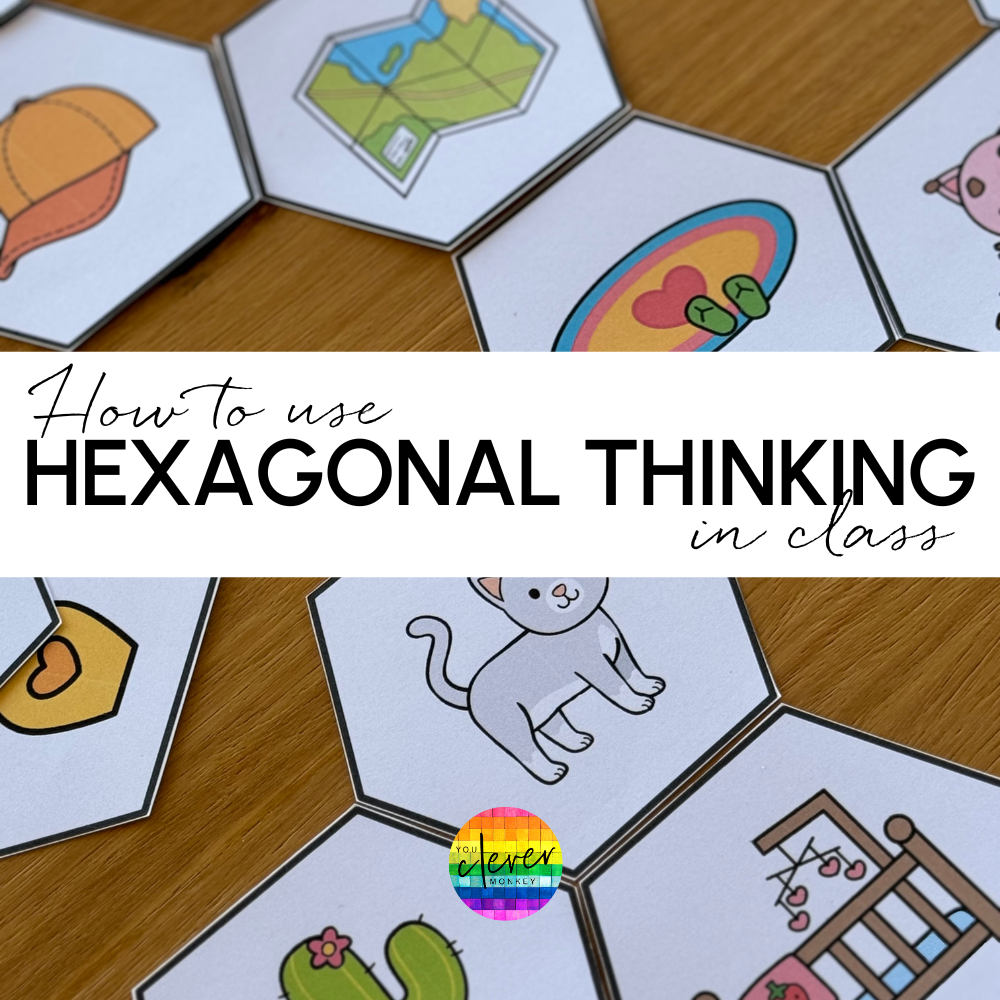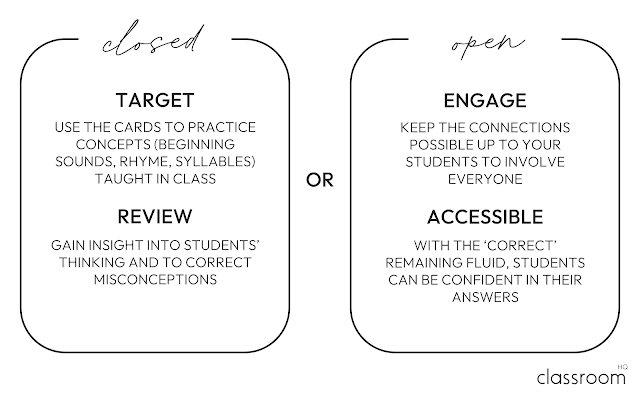Hexagonal thinking is not new but it can be an effective and versatile learning strategy for the classroom.
It can provide helpful visuals for students see connections between various concepts. The connections can be many and varied but your children must be able to explain and reason the connection they're made.
If you’re looking for a fresh way to promote discussion and critical thinking, hexagonal thinking is about to become your new favourite activity in class.
HOW TO USE HEXAGONAL THINKING IN CLASS
Hexagonal thinking can be used different ways in class. Working in the Early Years, I made some word work cards to use in our small group work as I wanted to find a way for my learners to demonstrate reasoning whilst also allowing the activity to be accessible to all.
Hexagonal thinking works simply. You place an idea or in my case, an image, on a hexagonal shaped card. The six sides, while not fun to cut out, allows other cards to be placed all around as children make different connections.
The connection may be as simple as they're the same colour or start with the same sound like mat, mud and mice. Or they rhyme like mice and dice. Or are both a means of transport or have the same number of syllables. Or perhaps, they both nouns or something found inside a house or are animals.
You can choose to make this task as open or as closed as you wish. My main goal when using hexagonal thinking cards is to encourage creative discussion amongst my learners.
Consider the benefits of both approaches to the outcomes you want from this activity when introducing it to your class.
You may want to model this activity with your students before expecting them to be able to do it independently in your morning work or small group rotations.
Ideally used in small groups, start each child with a small number of cards. Taking it in turns, students place hexagons next to each other to visually show a connection. If they are unable to place a card down, they can skip a turn.
You can play continuously - keep picking up a new card or cound down to the last card.
Your students can build hexagonal webs in groups or on their own. The main goal is to justify and explain their connections be it aloud or by photographing their web and labelling the connections.
Each web of hexagonal cards will look different and the reasons given for the connection many and as varied as the learners in our classrooms.
The beauty of using hexagonal thinking in class is its accessibility. With no right or wrong answer, even the most reluctant learner can be engaged.





